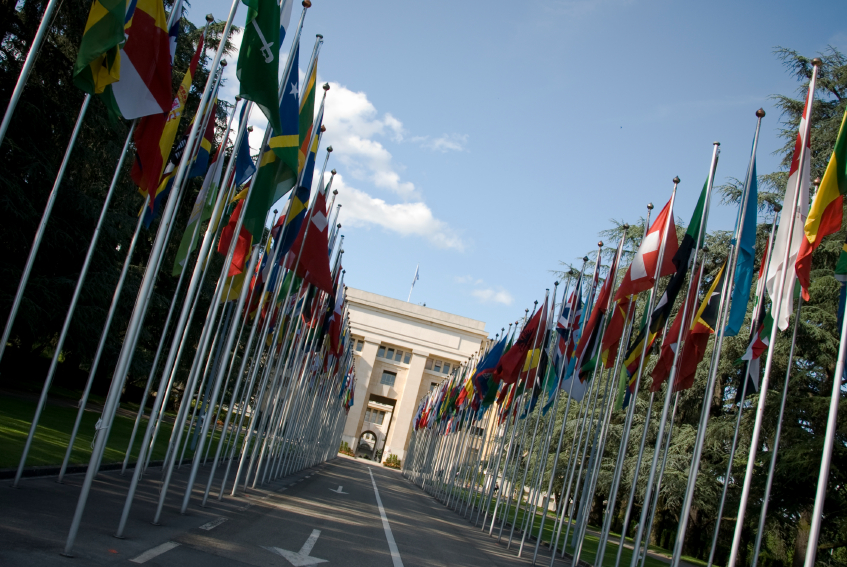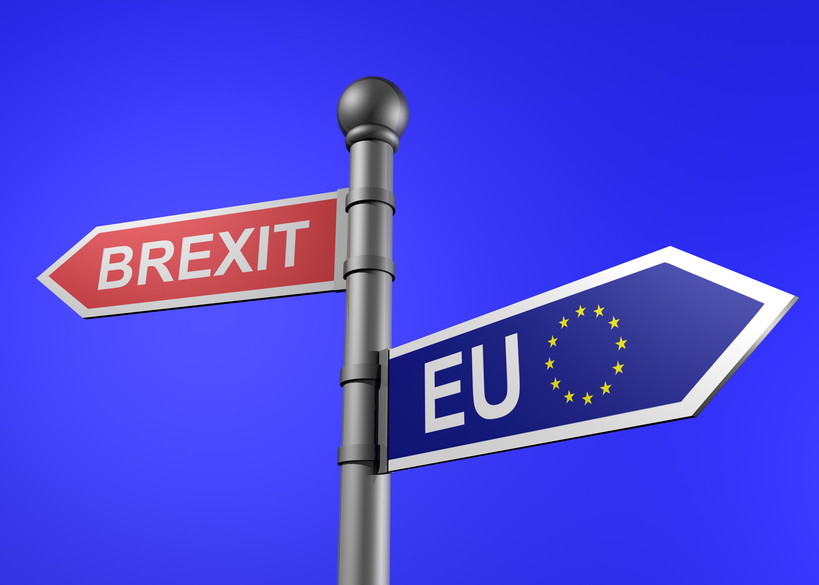The EU referendum is dominating every news medium as the UK heads to the big vote on 23 June.
As a UK citizen, I have found the lack of balanced and objective arguments frustratingly misleading and biased ranging from the ludicrous suggestion of an outbreak of a third world war to another economic downturn.
Worse still, that the UK will be cast asunder by the rest of europe.
Neither campaign has sort to differentiate the good from the bad, the pros and cons, they have succeeded only in blurring a complex issue.
The £9m spent on the 16 printed page brochure is the government’s view on why we should remain in the EU but surely this should have been balanced with reasons why exiting the EU could also mean good news for the UK too.
David Cameron, the prime minister was adamant in January that if he couldn’t renegotiate better terms for the UK it was highly likely that the UK would leave.
By February his position had changed to the UK remaining in the EU in spite of this there was no evidence to suggest that the renegotiation was statute other than proprietary agreements and none of which were made public.
How do we know if this renegotiation will stand the test of time?
The vote in campaign argues that if stay in the EU our economy will continue to thrive and our position will be much improved because the new deal makes it conducive for the UK to remain in allowing the economy to prosper and benefit from existing trading relations.
The vote exit campaign say that if we remain in the EU we will be subject to more rules and regulations, our unique identity and sovereignty in the long term will be increasingly eroded because the EU is committed to a more integrated and unified europe.
It is difficult to make a decision without understanding what the EU is and how it was formed this is an essential part of the decision making process.
 Why was the EU created in the first place and do we need to be a part of it?
Why was the EU created in the first place and do we need to be a part of it?
The establishment of a ‘United Europe’ goes back as far as 1948 in the wake of the second world war. The real foundations of the EU originated by the signing of two treaties in Rome on March 25 1957.
The treaties gave birth to the European Economic Community (EEC) which gave its signatories notably France, West Germany, Italy, The Netherlands and Luxembourg the premise to lay foundations which they hoped would lead to a safer, democratic and closer union among the peoples of europe.
A worthy ideal and one which governments of the day embraced with open arms.
A collective europe where people and countries were united sharing economic wealth and prosperity was an ideal status quo following the aftermath of two bloody world wars.
The EEC, also referred to as the common market was designed to foster closer ties, economic co-operation and integration by promoting trade with one another so that states would become interdependent enabling free circulation of goods, services, capital and free movement of people, reducing the likelihood of further conflict.
Britain did not want to become a member because of its commercial and political bonds with its colonies, former colonies and the commonwealth. It also did not want to be part of a custom union and defended the right to establish a free trade area.
It believed that national governments should set up their own tariffs with third countries and was opposed to any surrender of sovereignty of national states to a ‘Supernational European Institution’.
Britain wanted to be responsible for governing its own people and transacting business with the european trading partners of its choice and suggested an alternative to the EEC collectively known as the European Free Trade Association (EFTA) with Austria, Denmark, Norway, Portugal, Sweden, Switzerland.
With Britain effectively excluded, the 1960’s saw the EEC grow economically with growth rates better than the USA.
Harold Macmillan, then prime minister sought in August 1961 to open negotiations for full integration into the EEC.
French leader, Charles de Gaulle vetoed GB’s request in 1963 and again in 1967, when Harold Wilson, prime minister requested membership of the EEC. The french leader was suspicious of the close relationship Britain had with the US.
Although De Gaulle was committed to creating a strong and unified Europe to stand before the might of the US and the USSR he did not believe in a politically unified Europe and wanted to maintain the national independence of France.
 De Gaulle’s resignation in 1969 paved the way for Britain to enter the EEC.
De Gaulle’s resignation in 1969 paved the way for Britain to enter the EEC.
In 1972 with negotiations finalised, Edward Heath, the prime minister signed accession to the EEC in 1973, in the same year Ireland and Denmark joined but the Norwegians rejected the EEC in a referendum held later that year.
It wasn’t until 1975 that Britain held a referendum after renegotiating its entry terms this resulted in the voting public agreeing to Britain joining the EEC.
In 1979 the European Monetary System or EMS came into force introducing the european currency unit or ECU and the exchange rate mechanism ERM.
This was to be the precursor to the euro and meant that national governments were committed to coordinating their monetary policies.
All EEC members joined except Britain.
Jacques Delors became the the first president of the European Commission in 1985. Part of his remit was the removal of barriers to free trade along with free movement of capital and labour so that a single market could be created.
He wanted further european economic and political integration so that europe could compete with the US.
In the same year the Schengen agreement was signed by Belgium, the Netherlands, Luxembourg, France and Germany which was an ambitious initiative guaranteeing free movement of persons and gradual removal of frontiers among the community states.
The UK has never signed the Schengen agreement because governments have sought to maintain governance over our borders and who is allowed access into the UK.
When did the EEC become the EU?
The EEC from its inception was seen as a regional organisation founded on economic integration among its european members.
The Maastricht Treaty on european union was signed in December 1991 and paved the way for monetary union, social policy and european citizenship among its EU members.
This treaty gave europeans the right to live and vote in elections in any EU country, the treaty was designed to foster cooperation on foreign affairs, security asylum and immigration between the member states.
But it proved to be a controversial voting issue in national referendums, the danes rejected it in June 1992 and accepted it only at a second vote in May 1993 after they negotiated an opt out on monetary union like the UK.
In France the vote was 50.4{1d74e91790c4d065853aa1e61f19fbe549b48cdbdef5356588c1984bdc5a1a2f} for to 49.7{1d74e91790c4d065853aa1e61f19fbe549b48cdbdef5356588c1984bdc5a1a2f} against, in Germany and the UK there was considerable public discontent surrounding the signing of the treaty.
The formation of the EU in 1993 by the treaty of the European Union meant that the EEC was incorporated and renamed as the European Community, EC.
By 2009, the EC’s institutions were absorbed into the EU’s wider framework and the old EEC ceased to exist.
Throughout the 1990’s the inclusion of european countries continued with Cyprus, the Czech Republic, Estonia, Hungary, Poland and Slovenia.
By 1998, the EU had opened talks with Romania, Slovakia, Latvia, Lithuania, Bulgaria and Malta.
Whilst the union sort to increase membership from european states it faced discord amongst its members and allegations of mismanagement of public funds by the european commission.
In 1999 the EU President Jacques Santer and 19 other commissioners resigned due to fraud and mismanagement of the commission’s funds and questions surrounding the future existence of the EU continued to be asked.
The introduction of the euro in 1999 was one of the greatest changes undertaken by the EU, member states abolished their national currency in favour of the euro.
One of the sole purposes of the euro was to provide a unified monetary policy making it easier for european partners to trade.
Whilst the euro was phased in from 2002, most of the european populace were discontent with its introduction.
Sweden, Denmark and the UK opted to stay out of the euro.
During this time Valery D’Estaing, the french president hoped to establish a european constitution, one in which all member states could sign up to and agree.
The purpose of the constitution was to simplify EU treaties, ensure that the existence of the EU and its position was better understood by its citizens and to make it more efficient as it increased its membership size.
Throughout 2002 and 2003, the constitution failed to materialise because heads of state and government could not agree on the final context of the new constitution.
The June 2004 elections to the european parliament were held in 25 countries resulting in EU leaders signing a new constitution to establish the EU.
But referendums held in France and the Netherlands in 2005 meant the constitution was all but rejected by the voters this meant that the constitution failed to come into effect because it required all 25 member states to agree.
Where does that leave the future of the EU?
Understanding the background of the EU makes it easier to appreciate the concept behind the creation of a European Union.
It was founded on the fundamental principle that having a single market would make it easier for countries to trade with each other openly, to be able to travel freely across europe to live and work in whatever country its people choose.
Ultimately the EU was designed to create a better, fairer and more integrated europe .
A great vision maybe, but how can agreement be sought between 28 member states that are so culturally and economically diverse?
The lack of agreement between members regarding the constitution has left the EU in limbo, with no future direction and with a handful of trade treaties which would not change the way the UK and the rest of Europe continue to work with each other regardless of the existence of the EU.
We need each other and whether we stay or exit the EU relationships will continue to thrive and prosper and trade between the UK and europe will continue.
Whatever happens on the 23rd June life will continue and the EU will manage with or without us.
The most important thing to consider is whether the risk of remaining in outweighs the risk of exiting Europe.
The fear of change and lack of inertia because of what we don’t know often outweighs our ability to view the facts clearly, the old adage of why change something when it isn’t broken rings true.
We are a great nation but fear of what lies beyond the EU scares many; for others it offers greater opportunities and the prospect of making our own decisions about the future of our country.
It rather depends on how you view it.


